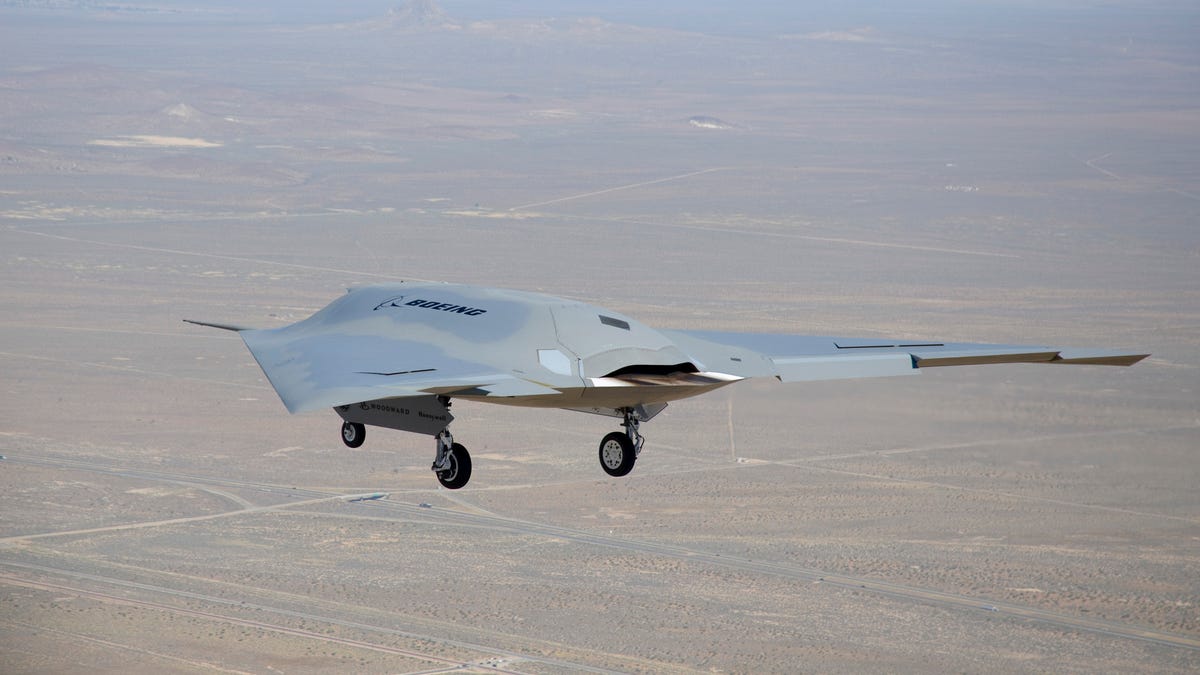Unmanned Phantom Ray makes first flight
The prototype aircraft, which sports a striking flying-wing design, flew for 17 minutes last month. Says Boeing: "Autonomous, fighter-sized unmanned aircraft are real."
Boeing said today that its Phantom Ray unmanned aircraft has flown on its own for the first time.
The prototype unmanned airborne system, which sports a striking flying-wing design, flew for 17 minutes on April 27, reaching a speed of 178 knots and an altitude of 7,500 feet. More flights will take place in the coming weeks, Boeing said.
"The UAS bar has been raised," Craig Brown, Phantom Ray program manager for Boeing, said in a statement. "Now I'm eager to see how high that bar will go."
Related links
• Phantom Ray hitches ride on 747
• X-47B robo-plane takes (flying) wing again
• Photos: The extreme history of X-Planes
The debut flight took place at NASA's Dryden Research Center at Edwards Air Force Base in California, following high-speed taxi tests in March. The flight test program is expected to last roughly six months.
The 36,500-pound Phantom Ray is 36 feet long, has a wingspan of 50 feet, and is powered by an F404-GE-102D turbofan engine. Eventually, it's expected to have a cruising speed of 614 mph, or 0.8 Mach, and an operating altitude of 40,000 feet.
Boeing formally introduced the Phantom Ray almost exactly a year ago. It will be using the aircraft, which the company says it's funding on its own nickel, as a test bed for future unmanned system technology. Eventually, the UAS could be used for a range of military missions including attack, surveillance, and autonomous aerial refueling.
Edwards AFB is also playing host to a similar UAS design from Northrop Grumman, the X-47B, which took its maiden flight there in February. That aircraft is being developed under a contract with the U.S. Navy, with the goal of getting an unmanned aircraft that can take off and land on an aircraft carrier.
Both the Phantom Ray and the X-47B have their roots in the discontinued Joint-Unmanned Combat Air System (J-UCAS) program that brought together DARPA, the Navy, and the U.S. Air Force.
"Autonomous, fighter-sized unmanned aircraft are real," Brown said.
Updated 7:06 a.m. PT on May 4: Added a photo from the Phantom Ray's first flight.


